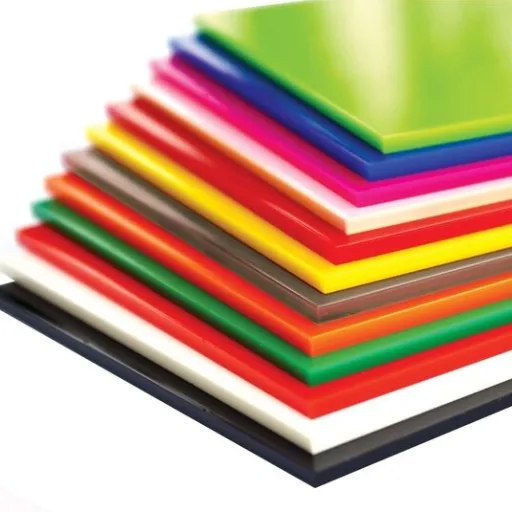In industrial applications, selecting the appropriate material requires a deep understanding of its properties. Two of the most frequently contemplated engineering plastics, with diverse uses, are high-density polyethylene (HDPE) and polyoxymethylene (POM). But how do these materials truly compare? This guide scrupulously helps identify the differences between HDPE and POM based on their chemical constituents, mechanical properties, advantages, and limitations. Irrespective of whether you are a manufacturer, an engineer, or a designer, this detailed overview provides value-adding intelligence to foster your requirement-specific material selection. HDPE and POM evaluation is provided comprehensively, from discussing their advantages in terms of sustainability and composition to flexibility, durability, and heat resistance at different costs.
What is POM and Its Properties?
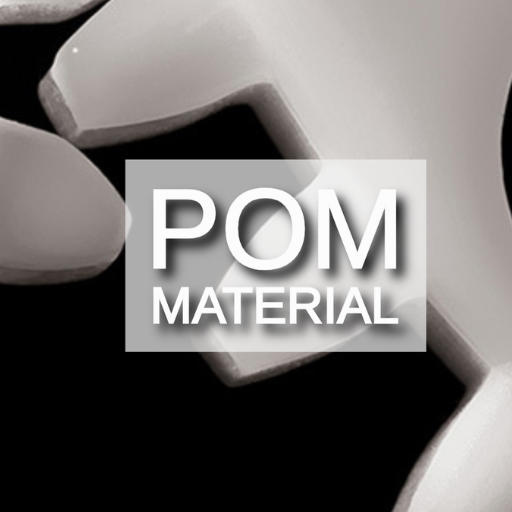
Polyoxymethylene (POM), also called acetal, is a high-performance thermoplastic better known for its low-friction ability and excellent mechanical strength and rigidity. It is primarily used in precision parts where high wear resistance, dimensional stability, and low friction are required. Apart from low friction, POM maintains its toughness within a greater temperature range that stretches beyond its high melting point. These aid in its application for more exacting tasks such as bearings, gears, and automotive components. POM’s moisture resistance is complemented by many chemicals and solvents, leading to a greater diffusion of its use in various industries.
Understanding POM Plastic: Composition and Characteristics
The unique combination of mechanical strength and rigidity of polyoxymethylene (POM) results from its nearly crystalline structure. The density of the polymer as a homopolymer or copolymer variant is in the range of 1.41 to 1.42 g/cm³. Both forms of POM exhibit remarkable characteristics, with a tensile strength often recorded at 60 to 70 MPa and a flexural modulus of approximately 2400-2800 MPa, enabling it to endure significant loads with little to no deformation.
POM excels in resisting wear and has a low coefficient of friction (between 0.05 and 0.1). This makes it exceptional for use in rotational applications like bushings and rollers. Furthermore, its operating temperature range is between -40 and +120 degrees Celsius, showcasing POM’s endurance under extreme conditions. In addition, resistance to hydrocarbons, oils, and solvents guarantees reliability in chemically challenging environments.
These special features keep advancing POM custom formulations, adding flame resistance and UV stability, and food-grade compliance, widening the scope of POM usage in aerospace, consumer electronics, and medical devices. Such tailored modifications ensure POM’s continued prominence as a coveted thermoplastic engineering material.
Mechanical Properties of POM: Strength and Durability
Polyoxymethylene (POM), also known as acetal, is one of the engineering thermoplastics that stands out comparatively due to its advanced mechanical properties. POM’s attributes include high tensile strength and high stiffness, which together provide outstanding dimensional stability under load—in other words, ensuring the structural integrity of precise applications. Its resistance to long-term mechanical stress further strengthens its position in critical environments that bear loads.
POM’s impact in these fields is also explained by an exceptionally low coefficient of friction that contributes to effective wear resistance, helping reduce abrasion in applications involving sliding or repetitive motion. POM also demonstrates fatigue endurance, making this material reliable for components subject to cyclic loading like gears, bearings, and conveyor belts. Its density of approximately 1.41 g/cm³ and tensile strength above 60 MPa (depending on grade) enables POM to contend with metals in terms of strength-to-weight ratio. This offers advantages in lightweighting around modern design. These tailored performance attributes explain POM’s significance in demanding applications, needing a blend of sensitivity, toughness, precision, and durability.
Applications of POM in Engineering: Why Choose POM Material?
Due to its unique properties, POM is preferred for various engineering applications. Below is a detailed list of its applications across industries, along with supporting data:
- Automotive Components
POM is extensively used in the automotive industry because of its low friction, wear resistance, and excellent dimensional stability. Typical applications include fuel system components, such as fuel pumps and valves, door lock mechanisms, seatbelt components, and gears. Data from studies indicate that POM’s creep resistance under cyclic loading contributes to an extended lifespan of components under continuous operations, reducing maintenance costs by up to 40%.
- Electrical and Electronics
The material’s high electrical insulation properties and flame resistance (grades with UL94 V-0 classification) make it ideal for electrical parts. Examples include connectors, switches, and housings for electronic devices. In continuous use, POM can withstand temperatures up to 100°C, ensuring reliability in thermal-sensitive environments.
- Consumer Products
POM is frequently found in high-quality consumer products like zippers, lighters, precision toothbrush components, and camera mechanisms. The material’s low moisture absorption (typically less than 0.2%) ensures that these items maintain functionality even in humid conditions.
- Industrial Machinery
Key applications in machinery include sliding and rotating components such as gears, bearings, rollers, and conveyor belts. Studies have shown that POM gears have a noise reduction capacity of up to 15% compared to metal gears, making them a cost-effective and quieter alternative for industrial automation systems.
- Medical Devices
Due to its biocompatibility and resistance to sterilization processes, POM is utilized in medical equipment components like inhalers, dialysis machines, and drug delivery systems. Data confirm that properly processed POM exhibits long-term chemical stability, even when subjected to sterilizing agents.
- Plumbing and Fluid Handling
POM’s excellent chemical resistance to fuels, oils, and many common solvents makes it suitable for plumbing systems, faucet components, and water filtration systems. Its low water absorption ensures minimal dimensional changes and leak-proof seals.
- Aerospace Components
Aerospace engineers leverage POM’s lightweight, high strength, and thermal stability to produce non-critical structural components, such as vent systems, fasteners, and control mechanisms, minimizing overall aircraft weight without compromising mechanical performance.
Key Data Highlights
- Density: ~1.41 g/cm³
- Tensile Strength (ISO 527): >60 MPa depending on grade
- Low moisture absorption <0.2% (ASTM D570)
- Operating temperature range: -40°C to 100°C (continuous use)
- Noise reduction in gear systems by 10–15% compared to metals
By leveraging these diverse applications and performance metrics, POM has become a core material in engineering solutions, ensuring durability, cost efficiency, and optimal performance across multiple industries.
What is HDPE and Its Uses?
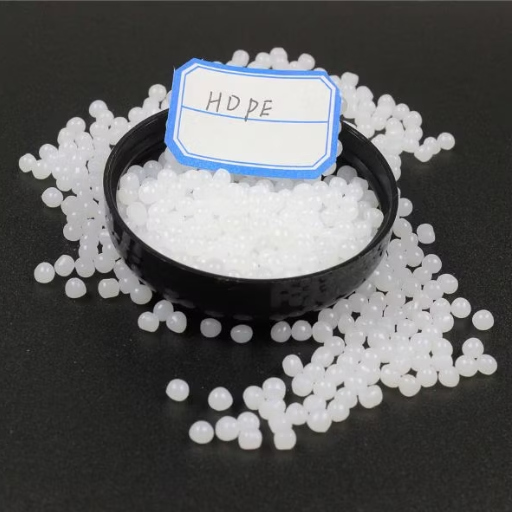
HDPE, High-Density Polyethylene, is a thermoplastic polymer derived from petroleum. This polymer has several suitable qualities, including a high strength-to-density ratio, impact resistance, and corrosion resistance, thus making it appropriate for diverse purposes. Manufacturing of pipes, storage containers, plastic bottles, and geomembranes includes the work of HDPE. Its moisture and chemical resistance take its utility to a new level in construction, agriculture, and packaging industries. Because it is easily moldable and recyclable, HDPE serves countless commercial and industrial purposes while being sustainable.
Overview of High-Density Polyethylene (HDPE)
Among the most used thermoplastic, might be due to high tensile HDPE Polyethylene offers strong might be due to high tensile strength s and low density, while boasting excellent impact resistance. These characteristics combine to give the polymer a melting point ranging from 120-140 degrees Celsius while also falling within the range of 0.93 and 0.97g/cm^3 when it comes to density. Its robust nature yet lightweight allows it to serve heavy-duty applications with ease.
As previously mentioned, the polymer also shows superior recovery from exposure to organic solvents, acids, bases, and other chemicals without causing significant damage, making HDPE resistant to harsh chemicals. Due to these traits, the polymer is preferred in scenarios requiring the user to worry about chemical resistance. When exposed to UV rays, hydrocarbons have shown thermal stability, and when using stabilizers, their durability increases, making them preferable to use under outdoor conditions, giving the polymer more endurance.
It’s non-toxic, food-safe, and absorbs moisture poorly—this is HDPE’s primary and most useful feature: its low moisture absorption. As of today, water transportation systems and food packaging are just some of its uses. Such manufacturing processes increase HDPE’s competitiveness as a recyclable material, which adds to its prominent value in several industries.
This strengthens HDPE’s ability to work in tandem with features such as adaptability and recyclability, making it suitable across various industries, from construction, infrastructure, automotive, healthcare, and packaging.
Mechanical Properties of HDPE: Strength and Flexibility
HDPE’s tensile strength, typically graded between 20 and 31 MPa depending on grade and process, showcases its unique fusion of flexibility and strength. Measuring the highest stress it can withstand while bearing mechanical loads can make or break many applications best suited for HDPE, including heavy-duty containers, load-bearing parts, infrastructure, and automotive. Alongside these benefits, compression HDPE can withstand surpassing 600% elongation. It also renders it ideal across industries because impact resistance and cracking at low temperatures are guaranteed, as is dimensional stability while stress is applied. This makes HDPE a highly sought-after material in construction, engineering, infrastructure, automotive, packaging, and other sectors.
Common Applications of HDPE in Various Industries
High-Density Polyethylene (HDPE) is utilized across numerous industries due to its exceptional mechanical and chemical properties, which enhance both durability and efficiency in critical applications. Below are some of the most prevalent uses:
- Infrastructure and Construction
HDPE is widely employed in constructing pipes for water and gas distribution systems due to its high impact strength, corrosion resistance, and flexibility. It is particularly valued for its performance in underground piping applications, where it withstands both structural and environmental stresses. Additionally, HDPE geomembranes are integral to landfill liners and containment systems, ensuring long-term chemical exposure and environmental degradation resistance.
- Packaging Industry
Due to its lightweight, non-toxic, and food-safe qualities, HDPE is extensively used in manufacturing containers for food, beverages, and household chemicals. Blow-molded HDPE bottles dominate the milk and juice cartons market, while injection-molded HDPE is preferred for caps, closures, and storage bins. The material’s impermeability ensures product safety and extends shelf life, making it an indispensable component in modern packaging solutions.
- Automotive Sector
The automotive industry leverages HDPE for various components, including fuel tanks, seating systems, and underbody panels. This is attributed to its light weight, which contributes to improved fuel efficiency, and its durability, which ensures resistance to wear and impact. Furthermore, HDPE’s recyclability aligns with the sector’s growing focus on sustainability and circular design principles.
- Agriculture
HDPE is crucial in producing irrigation systems, greenhouse films, and storage tanks for agricultural chemicals. Its strength and UV resistance enable it to withstand prolonged exposure to sunlight and extreme operational conditions, making it a reliable choice for enhancing agrarian efficiency.
- Medical Applications
HDPE is used in the healthcare sector in products like surgical instrument trays, prosthetics, and pharmaceutical packaging. Its chemical resistance and compliance with safety standards make it a trusted material for maintaining hygiene and preventing contamination.
HDPE’s versatility and reliability have consistently expanded its adoption across industries, positioning it as a critical material in established and emerging markets.
Comparing POM and HDPE: Key Differences
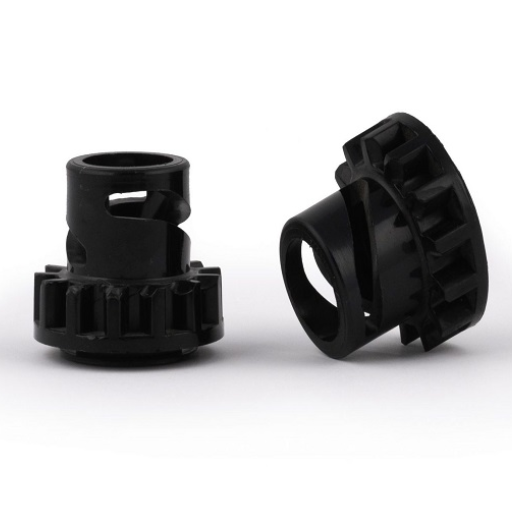
- Mechanical Properties: POM (Polyoxymethylene) offers higher strength, stiffness, and dimensional stability than HDPE (High-Density Polyethylene), making it suitable for precision components requiring tight tolerances. HDPE is more flexible and impact-resistant, excelling in applications prioritizing durability over rigidity.
- Temperature Resistance: POM can withstand higher operating temperatures than HDPE, making it ideal for heat exposure applications. HDPE performs well in low to moderate temperatures but may warp or degrade under high heat.
- Chemical Resistance: Both materials are excellent at resisting many chemicals, though HDPE is superior at resisting moisture and water absorption. POM’s chemical resistance is strong but limited, particularly towards strong acids and bases.
- Applications: POM is commonly used in gears, bearings, and precision mechanical parts, whereas HDPE excels in piping systems, containers, and medical packaging due to its lightweight and moisture-resistant properties.
Each material is suited to distinct applications based on specific property requirements, making a clear understanding of their differences crucial for optimal material selection.
Mechanical Strength: POM vs. HDPE
Examining the differences in mechanical strength between Polyoxymethylene and High-Density Polyethylene reveals some startling contrasts. POM is an example of a high-performance engineering thermoplastic due to its marked tensile strength and stiffness. A well-known characteristic of POM is its tensile strength, which often exceeds 60 MPa. This provides superior rigidity and dimensional stability, essential in applications requiring precision and durability under mechanical loads.
While POM is preferential for its rigidity, it lacks certain qualities provided by HDPE. High-density polyethylene is less stiff than POM but shows remarkable toughness and resistance to impact. Its tensile strength is also lower, generally between 20-37 MPa, but combined with its elasticity, HDPE becomes advantageous in cases where flexibility and resilience to deformation are preferred. One outstanding characteristic of HDPE is its remarkable ability to endure repeated stress without cracking, especially when subjected to low temperatures, making it useful in numerous industries.
In applications where mechanical strength is crucial, POM and HDPE become competitors. The distinguishing factor in deciding which material is better suited along the given criteria of stiffness and load-bearing ability is deformation under stress. POM is best suited for demanding environments requiring low creep and rigidity, while HDPE serves better for cases requiring impact-resilient tough use.
Chemical Resistance: Which Material is Better?
Because of their remarkable properties, POM (Polyoxymethylene) and HDPE (High-Density Polyethylene) exhibit fantastic chemical resistance. However, their effectiveness in each plastic differs based on the specific chemicals involved and the surroundings. POM, for example, shows excellent resistance to fuels, solvents, and weakly alkaline solutions, making it an automated and industrial-grade option in applications that have frequently encountered such materials. However, it tends to degrade under strong acids or oxidizing agents, including but not limited to nitric acid or chlorine-based compounds.
Unlike POM, HDPE shows tremendous, wide-grabbing resistance to many stronger substances, such as acids, alkalis, and organic solvents. The nonpolar nature of its structure accounts for these nonchemical interactions, thus explaining its frequent usage in chemical storage tanks and pipes. Additionally, HDPE performs well in extreme pH environments, which makes it known for its versatility.
An evaluation focused on resistance against acids and bases ultimately depends on the material’s use and the chemicals it will be exposed to. HDPE might prefer aggressive acids or bases, while POM will suit tasks involving oils and lubricants, while maintaining the risk of losing dimensional stability. Regardless, the seamless spectrum of chemical exposure must be considered when choosing a material to pinpoint its purpose for any application.
Dimensional Stability and Rigidity: A Comparison
When choosing materials for precision applications, the two parameters of primary concern are dimensional stability and rigidity. Like other thermoplastics, HDPE has the advantage of being flexible under stress; however, it has great thermal expansion and thus would be ineffective in applications with tight tolerances. On the other hand, POM exhibits remarkable dimensional stability due to its low thermal expansion coefficient. It is suitable for engineering projects requiring rigid components with specified tolerances, such as gear wheels and instruments, because of its rigidity and resistance to deformation under load.
Moreover, the differences between the moisture absorption for HDPE and POM can significantly impact the dimensional stability of the two materials. Being hydrophobic, HDPE resists absorbing water and maintains its dimensional and physical attributes even in high-humidity surroundings. However, POM absorbs a certain amount of moisture, which is so low that the material’s dimensional properties are unaffected. POM’s superior elasticity to HDPE is dominantly favorable for structural environments with a high degree of mechanical stress. These comparisons are essential as they help engineers determine the most suitable material based on performance-specific benchmarks.
Manufacturing Processes: How are POM and HDPE Made?
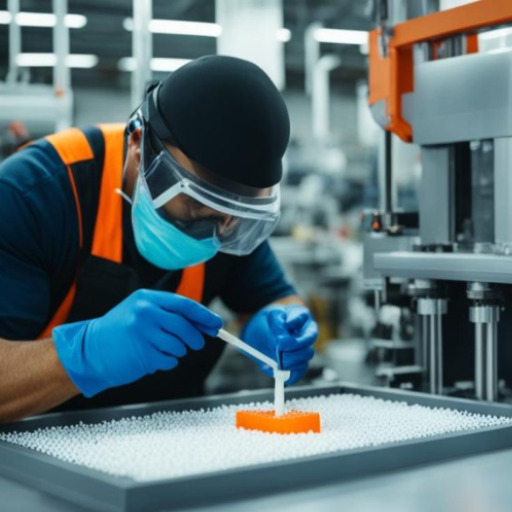
The polymerization of formaldehyde or trioxane derivative gives rise to polyoxymethylene (POM). Routing processes accomplish bulk or solution polymerization followed by stabilization to avoid degradation, yielding a highly crystalline thermoplastic with superlative mechanical attributes.
High-density polyethylene (HDPE) is synthesized through the ethylene polymerization process, employing slurry, gas phase, or solution phase techniques. Metallocene or Ziegler-Natta catalysts govern molecular weight and density and maintain consistent material properties for diverse applications.
The Manufacturing Process of POM Copolymers
The synthesis of POM copolymer begins with formaldehyde or trioxane in its polymerization form as feedstock. Trioxane is the preferred reactant due to its ease of handling and stability. Polymerization is started first by adding co-monomers like butanediol, formaldehyde, or ethylene oxide. The addition of these co-monomers helps mitigate polymer degradation by capping terminal groups of the polymer chain during and after synthesis. The reaction is catalyzed with strong acid catalysts, such as boron trifluoride etherate, under controlled temperature and pressure conditions to optimize polymerization efficiency.
After polymerization, the thermal stabilization of the crude polymer into end-capped forms, in which terminal hydroxyl groups are capped to improve thermal stability and long-term durability, is enabled. This step ensures that the polymer is resistant to depolymerization during processing and use. The stabilized resin is extruded, converted into pellets, and made available for distribution. The system’s overall yield and energy expenditures have improved due to catalyst efficiency and process optimization, making modern POM copolymer production more economically and environmentally sustainable for diverse industries, such as automotive and medical equipment manufacturing.
How HDPE is Produced: Key Steps in the Process
Polyethylene-high density (HDPE) is produced by a sequential set of carefully controlled steps, yielding a material with remarkable versatility, durability, and optimal utility across various applications. The baseline of the production is the polymerization of ethylene gas, which usually happens at low pressures and moderate temperatures in the presence of a catalytic system like Ziegler-Natta or metallocene. These advanced catalysts directly impact the polymer’s molecular weight distribution and density, determining its distinguishing mechanical properties and helping tailor it for various applications.
After the polymerization, the reaction mixture undergoes a phase separation to eliminate unreacted ethylene, which is continuously cycled back into the process to enhance resource utilization. Subsequently, the polymer is fortified with antioxidants and other thermally and oxidatively resistant additives. Following the stabilization steps, the HDPE resin is extruded and cut into pellets, transforming the resin into uniform particles that are easier to transport and process in downstream activities.
Modern developments in the production of HDPE focus on minimizing energy consumption and carbon footprint through enhancements to the reactor design and operational efficiency. Furthermore, advancements in process modeling and real-time monitoring enable manufacturers to achieve tighter tolerances in product specification, fulfilling the stringent requirements of the packaging, construction, or pipe manufacturing industries.
Impact of Manufacturing on Material Properties
The technology applied during high-density polyethylene (HDPE) production significantly impacts its material properties. Parameters like the choice of catalyst, polymerization temperature, and applied pressure incriminate HDPE’s molecular weight distribution and chain branching, influencing the material’s density, tensile strength, and impact resistance. For example, production methods that balance the short and long-chain branch distributions optimally tend to increase HDPE’s flexibility without compromising its durability. There are reports that reactor design innovations allow for control over these interfaces, which helps to produce HDPE with increased grade performance features such as thermal stability and resistance to environmental stress cracking. In addition, post-manufacture treatments, such as annealing and biaxial orientation, may enhance the material’s mechanical properties, rendering it useful for heavy-duty applications in automotive manufacturing and sophisticated piping systems.
Applications of POM and HDPE in Real World Scenarios
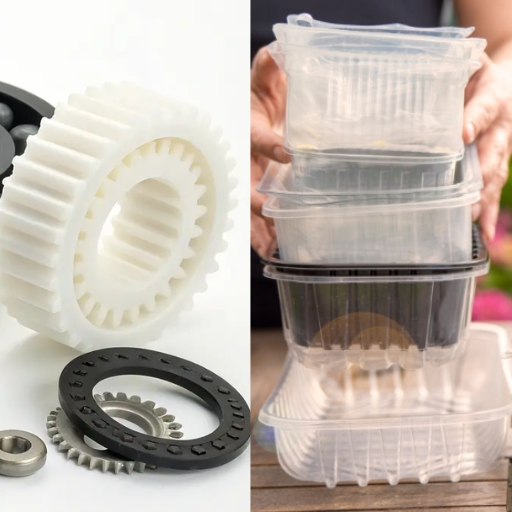
In my years of experience, POM (Polyoxymethylene), with its high dimensional stability, possesses very low friction, which makes it great for use in automotive and electronic precision components like gears, fasteners, and bearings. Also, HDPE (High-Density Polyethylene) has an impact strength and chemical resistance, which makes it ideal for producing durable goods like piping systems, containers, and even fuel tanks. Both materials are reliable and efficient, which is why they are used in specialized applications with the most demanding industry standards.
Precision Parts and Components Made from POM
POM can also be referred to as acetal, and it is categorized as a type of an engineering thermoplastic. These materials are prized for their low friction (which is very high in POM) and their excellent mechanical properties, which are critical in the construction industry. POM can also be used to produce items that have precision components and need to remain working properly under heavy loads and stress over a long period. POM is very popular in the automotive sector because it can withstand very high fatigue levels. This allows POM to be used in automotive gear assemblies because it maintains structural integrity over extended operation cycles.
In electronics, POM is used in intricate components including connectors, insulators, and housings due to its excellent dielectric properties and low moisture absorption. These properties and exceptional chemical resistance make POM a top choice for parts exposed to harsh, chemically intensive environments. Modern machining and injection molding technologies have also enhanced many other industries by allowing highly repetitive and precise fabrication of intricate POM-based components to meet the strict requirements of industrial necessities.
HDPE Applications in Packaging and Construction
High-density polyethylene (HDPE) is an adaptable polymer of considerable importance in the packaging and construction industries because of its remarkable strength-to-density ratio, chemical resistance, and long-term durability. Many industries use HDPE most prominently to manufacture bottles, caps, and containers due to its robust and food-safe characteristics. The recyclable nature of HDPE also makes it an attractive material in the packaging industry because of global sustainability initiatives.
In the construction industry, HDPE is crucial in making pipes, geomembranes, and general construction materials. Its strength against corrosion, UV damage, and high impact adds reliability in critical areas of water and gas transfer applications. HDPE is predominant in making reinforcement grids used to enhance the soil for infrastructural projects and in protective barriers, which also withstand the test of time. Its lightweight yet high-strength features make transportation and installation easier, thus lowering logistical and operational expenses. All these reasons combine to prove the necessity of HDPE in aiding modern packaging and construction technologies.
Choosing Between POM and HDPE for Specific Uses
When choosing between polyoxymethylene (POM) and high-density polyethylene (HDPE), the material properties of the application must be considered. POM serves best where moderate levels of rigidity, high strength, stable dimensions, and low friction are required. This makes it favorable in precision engineering for use in gears, bearing parts, and even complex mechanically stressed structures. In addition, its outstanding performance when faced with continuous stress at high temperatures adds to its usefulness in some rigorous conditions.
In contrast, HDPE is famous for its greater endurance to chemicals, moisture, and severe weather conditions, making it suitable for use in construction, piping systems, and packaging. It is relatively lightweight and offers durability, which can facilitate transportation and decrease installation time. Moreover, due to its pressure-resistant properties, HDPE is often the material of choice for crack-susceptible outdoor installations and fluid transport infrastructure.
The selection between POM and HDPE depends on the mechanical, environmental, and economic factors the project intends to address. POM is ideal for highly precise industrial applications due to its strength and precision, whereas HDPE performs best in outdoor and less controlled environments with high-volume use because of its reliance on and respect for rough handling.
What are the Advantages and Disadvantages of Each Material?
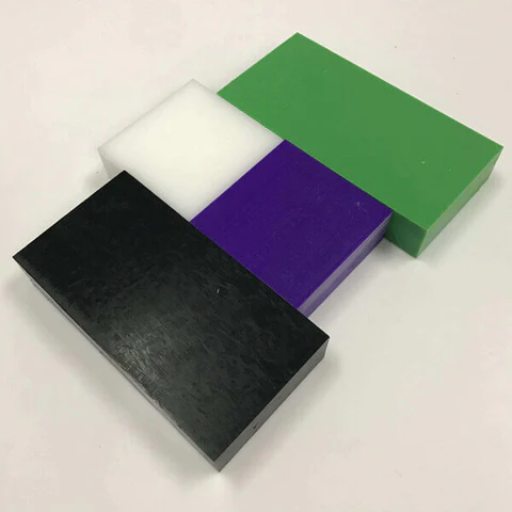
For me, POM (Polyoxymethylene) has exceptional dimensional stability, alongside mechanical strength and low friction, making it suited for precision applications such as gears and bearings. Yet, some of its drawbacks include lower chemical resistance and exposure to moisture under certain conditions, which can limit the use of POM in more extreme environments.
Conversely, its HDPE (High-Density Polyethylene) counterpart excels in the robust category as it is highly resistant to chemicals, UV rays, and extreme weather, making it beneficial for outdoor and large-scale applications. Its lightweight and ease of manufacturing are pros, but when high precision is required, POM would be more advantageous as HDPE possesses lower mechanical strength and rigidity.
Strengths of POM: Why It’s a Preferred Choice
Polyoxymethylene (POM) is also identified as acetal. It is a thermoplastic of engineering grade with remarkable features, such as high performance and excellent mechanical properties. One significant advantage POM has over others is its high tensile strength, stiffness, and low friction coefficient, which greatly assist the material in performing well under intense loads and high speeds. For example, POM is an effective material for gears, bearings, and other sliding components. In addition to those qualities, it possesses a high resistance to moisture, solvents, and various other chemicals, making POM reliable in harsh conditions. Even more value is added by the material’s extreme fatigue endurance, allowing it to withstand repeated stresses without losing its integrity. Due to its exceptional machinability, it is possible to produce sliding components to the designer’s specifications, no matter how complex, without losing tolerances, further enhancing its usefulness. Such factors make POM highly useful in the automotive, consumer electronics, and medical fields where advanced dependability and performance are required.
Limitations of HDPE: When It May Not Be Suitable
Applications of High-Density Polyethylene (HDPE) come in many shapes and forms. However, it’s important to note the drawbacks as well. The most prominent ones are low-temperature resistance. Thermally cycling environments are not ideal as they lose structural integrity at 120 degrees Celsius. Not to mention the 248 fahrenheit mark also serves as a cap.
Furthermore, UV degradation limits outdoor application unless UV stabilizers are employed. When left exposed to sunshine, HDPE also faces the consequences of brittleness over time, making it unsustainable and mechanically weaker over time. Brittle and weaker are not terms anyone would look for in a material’s dependable elongation.
In addition to these consequences, while metals and high-performance polymer alternatives exist, HDPE lags in rigidity and tensile strength for load-bearing structures. Not only this, but at super low temperatures, impact strength also lacks, making it fail-prone in sub-zero conditions. And finally, dependency on organic solvents and more potent oxidants leads to more risks for industrial and chemical purposes, making them more susceptible to risk. Limitations such as this are crucial to understand and dissect to ensure that when employing the material in harsh scenarios, it’s done intelligently.
Cost Considerations When Choosing Between POM and HDPE
While analyzing the costs of polyoxymethylene (POM) and high-density polyethylene (HDPE), we must consider their pricing models and application-specific efficiencies. Acetal, or POM, has a higher material cost due to its marked mechanical properties, including high stiffness, low friction, and disproportionate retention of physical structure. This makes it one of the most preferred materials for precision components such as automotive parts, gears, and bearings that offer a performance-to-cost balance.
HDPE’s performance standards are comparatively lower than POM, making it more affordable in terms of cost, and widely used in non-stringent high-volume applications. Its affordability makes it a practical choice for containers, plastic bottles, and piping. Its recyclability also affects long-term cost-efficiency in sustainability-focused industries.
Nonetheless, the cost comparison should factor in the cost of conceiving for machining or molding, as higher tooling costs may be associated with processed POM owing to its rigidity. For large-scale production, lower energy costs are required due to the ease of thermoplastic processing, along with the low melting point of HDPE, translating to fewer overall operating expenses. A balance of these factors will assist in selecting an appropriate material, tailoring the needs of the outlined requirements against an extensive cost-benefit analysis.
Reference Sources
-
- Key Findings: This study explored the rheological behavior of polymer melts, including POM, using micro capillary dies. It highlighted that the accuracy of viscosity measurements is influenced by factors like the amount of polymer in the barrel, pre-compaction pressure, and die diameter. The research emphasized the need for updated measurement conditions for micro-scale applications.
- Methodology: The study used theoretical modeling and experimental setups with high-pressure capillary rheometers to analyze the effects of micro-scale conditions on polymer melt flow.
-
- Key Findings: This paper examined the impact of moisture content on the quality of injected plastic products, including POM. Excessive moisture can lead to defects like splay and reduced mechanical properties. The study also provided guidelines for optimal drying conditions to maintain material quality.
- Methodology: The research involved controlled experiments with varying drying times and moisture levels, using injection molding to assess the quality of the resulting products.
- Top POM Plastic Pellets Suppliers in China
Frequently Asked Questions
Q: What are the main differences between HDPE and POM?
A: The main differences between HDPE and POM lie in their material properties. HDPE is known for its high impact resistance and low moisture absorption. In contrast, POM, known as polyoxymethylene or acetal, offers superior mechanical properties, including higher tensile strength and stiffness, making it an ideal choice for engineering plastic applications.
Q: Why is POM considered an engineering plastic?
A: POM is considered an engineering plastic due to its excellent mechanical properties, such as high strength, hardness, and low friction. These characteristics make it suitable for high-performance applications like gears and bearings, where dimensional stability and resistance to wear are critical.
Q: What applications typically use POM as a material?
A: POM is widely used in applications requiring high strength and rigidity, such as manufacturing gears, bearings, and other moving parts. Its characteristics, such as low friction and impact resistance, make it an excellent choice for various engineering applications.
Q: How does the tensile strength of POM compare to HDPE?
A: POM has a higher tensile strength than HDPE, making it a better choice for applications requiring materials to withstand significant mechanical stress. This higher tensile strength is one of the advantages of POM over other plastics like nylon and HDPE.
Q: What is the impact resistance of POM?
A: POM’s impact resistance is one of its notable features, allowing it to withstand mechanical shocks without deforming. This property and its stiffness and hardness contribute to its reliability in demanding engineering applications.
Q: Can POM degrade over time, and what affects its degradation?
A: While POM has excellent resistance to degradation, prolonged exposure to certain chemicals and high temperatures can still affect it. Although POM’s resistance to degradation is superior to that of many other thermoplastics, careful selection of the operational environment is necessary to maintain its performance and reliability.
Q: What makes POM sheets a popular choice in manufacturing?
A: POM sheets are popular in manufacturing due to their excellent dimensional stability, low moisture absorption, and high crystallinity. These properties allow for precise tolerances and durability in applications where parts are subject to continuous mechanical stress.
Q: How does the mechanical stress resistance of POM compare to other plastics?
A: POM exhibits superior mechanical stress resistance to many other plastics, including HDPE and nylon. Its high strength and rigidity make it an ideal choice for applications that require parts to endure significant forces without failure.
Q: Is POM suitable for outdoor applications?
A: POM can be suitable for outdoor applications, but its long-term performance may be affected by UV exposure and environmental factors. For outdoor use, it is essential to consider the potential for degradation and choose grades of POM that offer enhanced resistance to these conditions.



